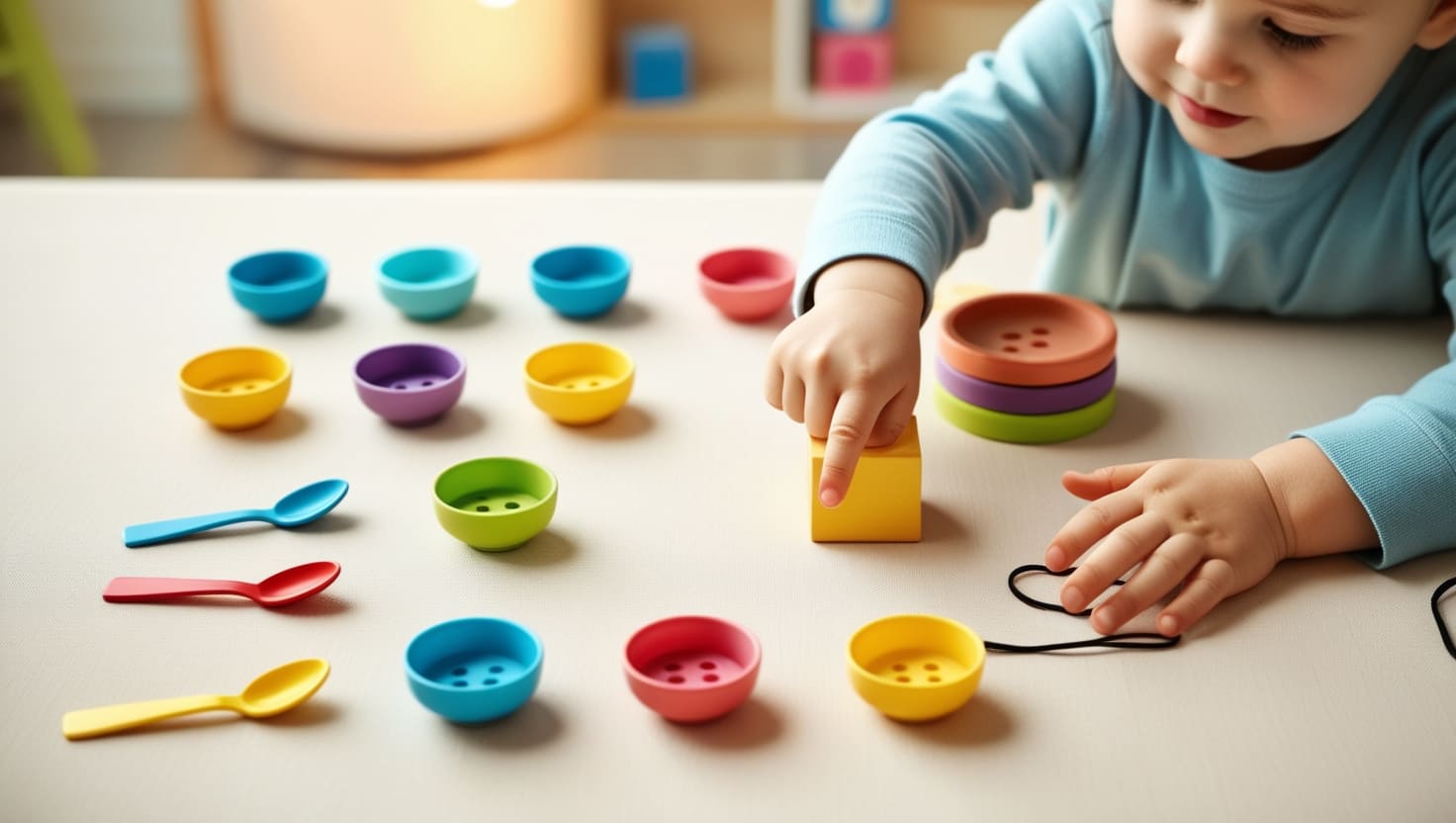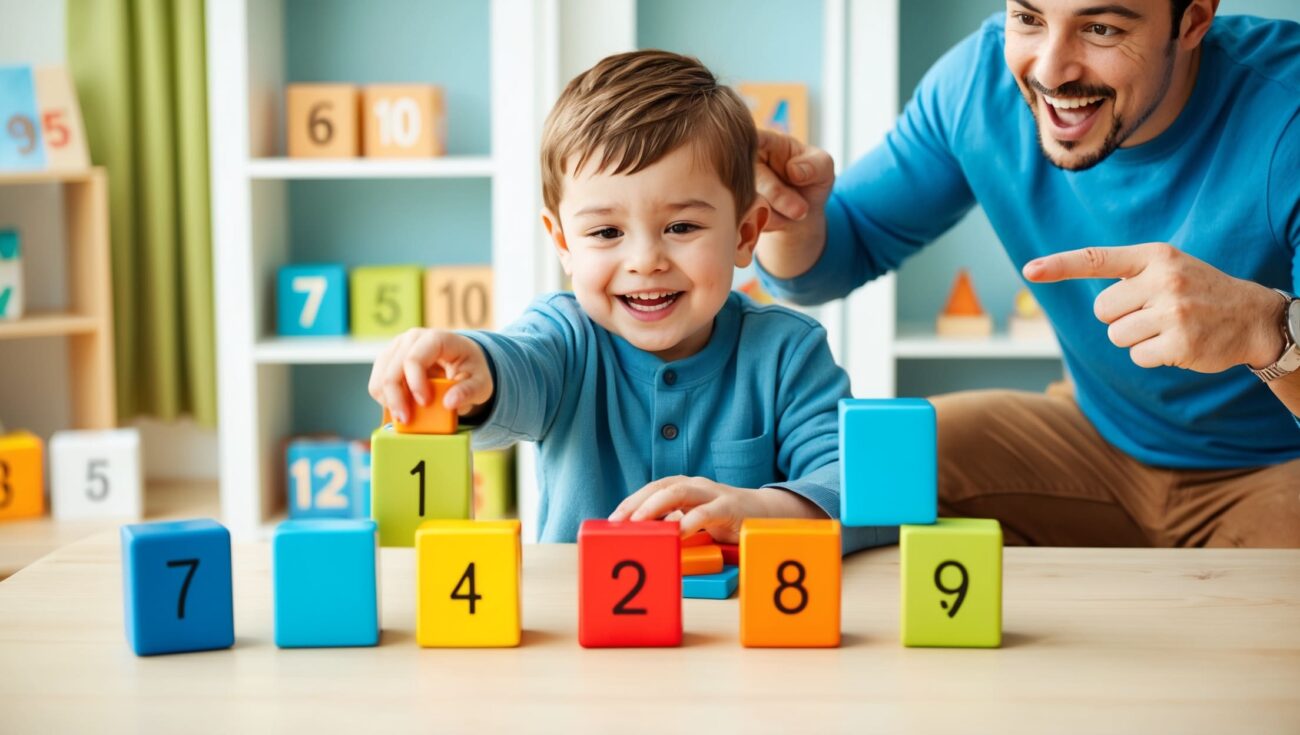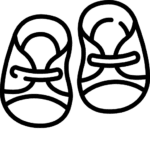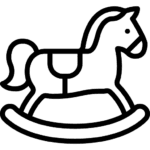المدونة
كيفية تعليم طفلك العد باستخدام أدوات بسيطة

هل تبحث عن طرق ممتعة وبسيطة وعملية لتعليم طفلك العد؟ يُعد العد من أولى المهارات الرياضية الأساسية التي يكتسبها الأطفال، وهو يُرسي أسس إدراك الأعداد، والجمع والطرح، ومفاهيم رياضية أكثر تقدمًا في مراحل لاحقة من المدرسة.
أفضل ما في الأمر؟ لستَ بحاجة إلى شراء ألعاب تعليمية باهظة الثمن أو تطبيقات متطورة. يُمكنك تعليم طفلك العد باستخدام أدوات منزلية يومية، وألعاب إبداعية، وروتيني يومي. من خلال ممارسة بسيطة ومتواصلة في بيئة مرحة، سيتعلم طفلك تمييز الأرقام وفهم الكميات، وبناء أساس متين للنجاح في الرياضيات مدى الحياة. في هذه المقالة، سنستكشف خمس طرق سهلة وجذابة لتعليم طفلك العد باستخدام أدوات منزلية متوفرة لديك.
Tip 1: Use Everyday Household Items
منزلك مليء بأدوات مجانية وسهلة الاستخدام، تُستخدم أيضًا كأدوات عدّ. هذه الأدوات المألوفة تجعل التعلم يبدو طبيعيًا وممتعًا.
- استخدم كائنات صغيرة مثل الأزرار أو العملات المعدنية أو المعكرونة: اجمع العناصر الصغيرة مثل أغطية الزجاجات أو مكعبات الليجو أو الفاصوليا أو مشابك الورق. دع طفلك يصطفهم ويحسب واحدًا تلو الآخر. شجعهم على لمس كل عنصر أو تحريكه أثناء العد لتعزيز المراسلات الفردية.
- اجعل وقت تناول الوجبات الخفيفة فرصة للتعلم: عد قطع الحبوب أو العنب أو البسكويت قبل تناول الطعام. قل أشياء مثل "دعونا نضع 5 قطع من البسكويت على طبقك" أو "هل يمكنك أن تأكل 3 حبات زبيب وتترك 2؟"
- التجميع والعدّ: اطلب من طفلك تصنيف الأشياء حسب اللون أو الحجم أو النوع، ثم عدّ عددها في كل مجموعة. على سبيل المثال، "كم عدد المكعبات الحمراء؟ الآن لنعد المكعبات الزرقاء."
تساعد هذه التجارب العملية والبصرية طفلك على ربط الأرقام بالكميات في الحياة الواقعية وتعزيز التعرف المبكر على الأرقام.
Tip 2: Incorporate Counting into Daily Routines
يتعلم الأطفال بشكل أفضل عندما يصبح العد جزءًا من تجاربهم اليومية. استخدموا روتينكم اليومي كفرص لتعريفهم بمهارات العد وتعزيزها.
- العد أثناء صعود الدرج: اطلب من طفلك العد بصوت عالٍ مع كل خطوة أثناء صعوده أو نزوله. تعمل هذه الحركة المتكررة المقترنة بالعد على بناء الإيقاع واستدعاء ترتيب الأرقام.
- تحويل وقت التنظيف إلى وقت العد: أثناء وضع الألعاب بعيدًا، قل أشياء مثل، "دعونا نلتقط 10 مكعبات. قم بعدها كما تمضي."
- العد في متاجر البقالة: أثناء التسوق، اطلب من طفلك أن يحسب عدد التفاحات الموجودة في الكيس أو عدد صناديق الحبوب الموجودة في عربة التسوق. يمكنك أيضًا تحويلها إلى عملية بحث صغيرة: "هل يمكنك العثور على 3 موزات؟"
تجعل هذه التجارب الحياتية الواقعية الأرقام ذات معنى، وقابلة للربط، وسهلة الفهم بالنسبة للمتعلمين الصغار.
Tip 3: Use Fingers and Body Movements
غالبًا ما يتعلم الأطفال بشكل أفضل من خلال الحركة. يُعدّ التعلم الحركي - باستخدام الجسم للتعلم - فعالًا بشكل خاص للأطفال الصغار ومرحلة ما قبل المدرسة الذين قد لا يكونون مستعدين بعد للرياضيات المجردة.
- عد الأصابع: ابدأ بالعد على الأصابع - "واحد، اثنان، ثلاثة..." - مع رفع الأصابع لتمثيل كل رقم. يساعد هذا الأطفال على ربط الإجراء الجسدي بقيمة رقمية.
- التصفيق أو القفز أو النقر للعد: قم بالعد أثناء القفز أو التصفيق أو النقر بقدميك. "دعونا نقفز خمس مرات معًا!" هذه الطريقة لا تعلم الأرقام فحسب، بل تعمل أيضًا على تحسين المهارات الحركية الإجمالية.
- دمج الأغاني مع الحركة: الأغاني الكلاسيكية مثل "خمس بطات صغيرة" و"عشرة في السرير" و"واحد، اثنان، اربط حذائي" تجمع بين العد والحركة. استخدم الأصابع أو إيماءات اليد أو الدعائم لجعلها أكثر تفاعلية.
يساعد استخدام الجسم على تعزيز العد باعتباره تجربة حسية كاملة، مما يؤدي إلى إشراك المزيد من مناطق الدماغ وتعزيز الذاكرة.
Tip 4: Create Simple DIY Counting Tools
أدوات "اصنعها بنفسك" هي طريقة إبداعية واقتصادية لجعل التعلم ممتعًا وتفاعليًا. يمكن صنع معظمها باستخدام أشياء موجودة في مطبخك، أو في سلة إعادة التدوير، أو في صندوق الأشغال اليدوية.
- عد العصي أو الخرز: استخدم عصي المصاصات أو منظفات الأنابيب أو أربطة الأحذية المزينة بالخرز. قم بربط الخرز في مجموعات من خمسة أو عشرة واطلب من طفلك أن يعدها بصوت عالٍ أثناء اللعب.
- لعبة عد كرتونة البيض: خذ كرتونة بيض فارغة واكتب الأرقام من 1 إلى 12 في كل قسم. اطلب من طفلك أن يضع العدد الصحيح من الأشياء (مثل كرات الكريات أو قطع الحبوب) في كل كوب.
- أكواب أو أوعية الأرقام: قم بتسمية الأكواب الورقية بالأرقام من 1 إلى 10. أعط طفلك وعاءً من العناصر الصغيرة واطلب منه وضع الرقم الصحيح في كل كوب.
توفر هذه الأنشطة طريقة بصرية وحسية لربط الأرقام بالكميات المادية، وهو أمر بالغ الأهمية للتنمية المبكرة للرياضيات.
Tip 5: Make Counting Part of Play
يحب الأطفال اللعب بطبيعتهم، ويعد دمج العد في هذا اللعب أحد أفضل الطرق للحفاظ على التعلم ممتعًا وفعالًا.
- أبراج المكعبات ولعب البناء: بينما تقوم أنت وطفلك ببناء برج أو هياكل، قم بعد المكعبات بصوت عالٍ. "يحتوي هذا البرج على 4 كتل، هل يمكننا إضافة كتلتين أخريين؟"
- عد الألعاب: قم بصف سيارات الألعاب أو الدمى أو الديناصورات أو شخصيات الحركة وقم بعدها معًا. يمكنك أيضًا إنشاء ألعاب مصغرة مثل "كم عدد الحيوانات التي يمكننا العثور عليها في صندوق الألعاب؟"
- المتجر أو المطعم التظاهري: قم بإعداد سيناريو اللعب التظاهري حيث يكون طفلك هو أمين الصندوق أو الطاهي. اسمح لهم "ببيع" 3 تفاحات، أو "تقديم" 5 كعكات، أو عد النقود التظاهرية أثناء المعاملات.
من خلال دمج العد في اللعب التظاهري، سيبدأ طفلك في رؤية الأرقام كجزء طبيعي من الحياة اليومية - مما يجعل التعلم أكثر معنى ولا ينسى.
تعليم طفلك العد لا يتطلب بالضرورة أدوات باهظة الثمن أو دروسًا معقدة. من خلال أنشطة بسيطة وعملية وممارسة عملية، يمكن دمج العد في الروتين اليومي واللعب الإبداعي وقضاء وقت ممتع مع الطفل. يكمن السر في الاستمرارية والتشجيع، وجعل التعلم أشبه بلعبة وليس مهمة شاقة.
احتفل بالإنجازات الصغيرة، تحلَّ بالصبر، ودَع طفلك يستمتع بالعملية. سواءً بالتصفيق، أو التكديس، أو الرسم، أو التسوق، فإن كل فرصة عدّ تُساعد على بناء ثقة طفلك في الرياضيات - رقمًا تلو الآخر.











